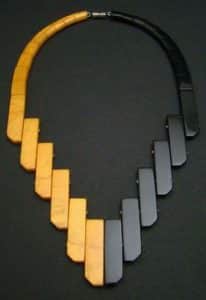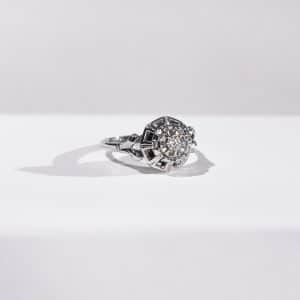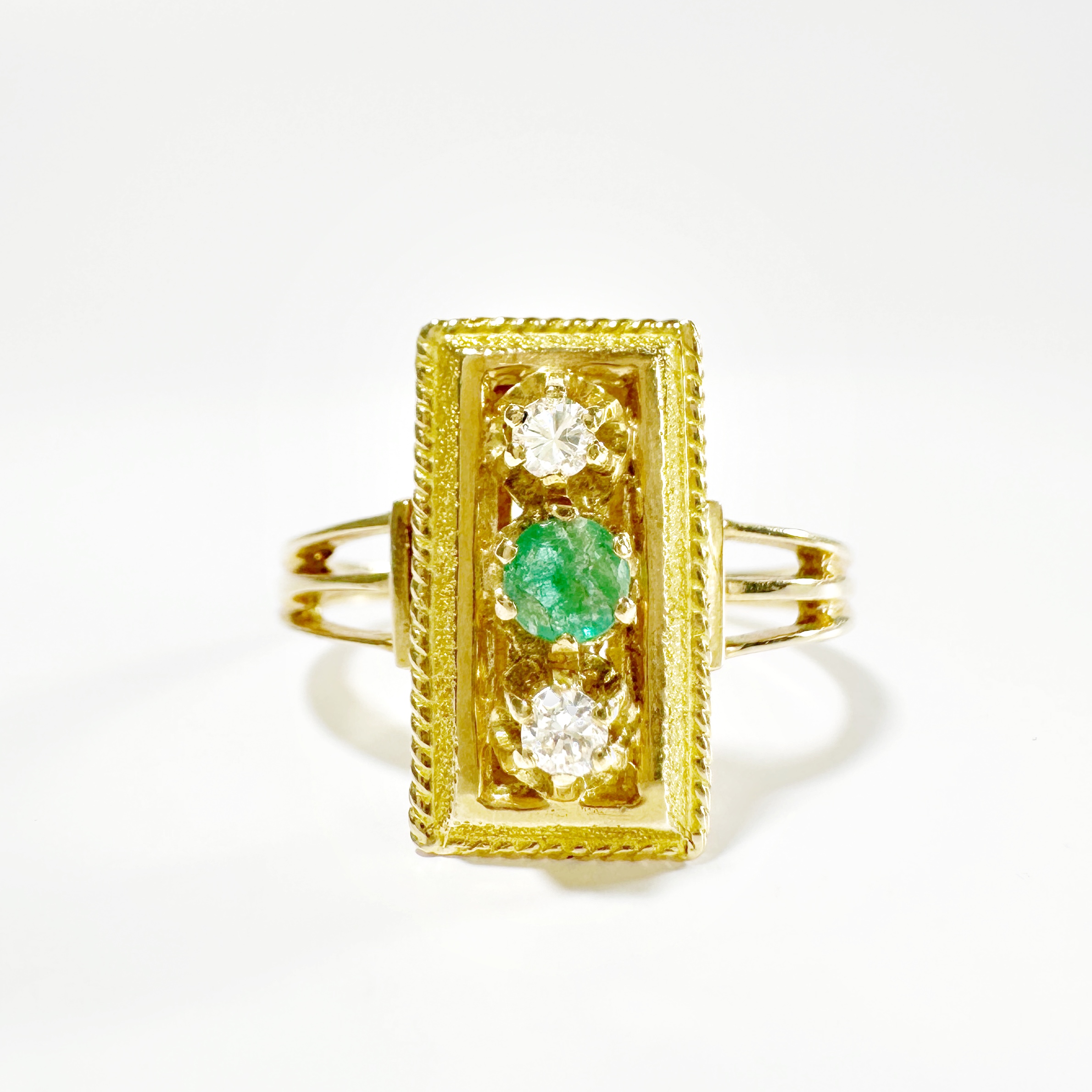 Art Deco jewelry is an iconic style of jewelry that originated in the 1920s and 1930s. It was a time of great change and modernization in the world, and Art Deco was a reflection of that new modern age. This style of jewelry is characterized by bold geometric shapes, vivid colors, and the use of new materials like plastic and Bakelite. In this article, we will delve into the time period of Art Deco jewelry, what defines its aesthetic, what materials and metals were used, and what influenced it.
Art Deco jewelry is an iconic style of jewelry that originated in the 1920s and 1930s. It was a time of great change and modernization in the world, and Art Deco was a reflection of that new modern age. This style of jewelry is characterized by bold geometric shapes, vivid colors, and the use of new materials like plastic and Bakelite. In this article, we will delve into the time period of Art Deco jewelry, what defines its aesthetic, what materials and metals were used, and what influenced it.
ORIGINS OF THE TERM
The term “Art Deco” comes from the 1925 « Exposition Internationale des Arts Décoratifs et Industriels Modernes », a world’s fair held in Paris, France. The fair showcased the latest advancements in design and decorative arts, and the term “Art Deco” was used to describe the style that emerged from this exhibition. The term “Art Deco” was later adopted by art historians and critics to describe the style that was popular in the 1920s and 1930s, and it has since become the widely accepted term for this style of art and design.
AN ERA OF CHANGE
This was the era of the roaring twenties, the flapper girl, jazz music, and the rise of Art Deco style in fashion and design. The style became popular during the interwar years, between World War I and World War II, and it was a time of great social and economic upheaval. The rise of Art Deco was a reflection of this new modern age, where people were looking for something new and exciting in the world of fashion and design.
A DISTINCTIVE AESTHETIC
 Art Deco jewelry is characterized by its bold geometric shapes, vivid colors, and the use of new materials like plastic and Bakelite. The jewelry is often symmetrical, with the use of abstract and angular shapes. The style is also characterized by its use of contrasting colors, such as black and white, and the use of vivid gemstones like emeralds, rubies, and sapphires. Art Deco jewelry is a reflection of the new modern age, where people were looking for something new and exciting in the world of fashion and design.
Art Deco jewelry is characterized by its bold geometric shapes, vivid colors, and the use of new materials like plastic and Bakelite. The jewelry is often symmetrical, with the use of abstract and angular shapes. The style is also characterized by its use of contrasting colors, such as black and white, and the use of vivid gemstones like emeralds, rubies, and sapphires. Art Deco jewelry is a reflection of the new modern age, where people were looking for something new and exciting in the world of fashion and design.
WHITE METALS AND VIVID COLORS
Art Deco jewelry was made using a variety of materials, including platinum, gold, silver, diamonds, and other gemstones. Yellow gold was no longer favored by jeweler and white metals were very popular during the period. Platinum in particular was especially popular during this time, as it was a new metal that was strong, durable, and had a beautiful white color. Platinum was often used to create intricate designs and was a popular choice for engagement rings. Other materials used in Art Deco jewelry included Bakelite, a type of plastic that was developed in the early XXth century, and other synthetic materials.
WHAT INFLUENCED ART DECO JEWELRY?
 Art Deco jewelry was influenced by a variety of factors, including the rise of modern art and design, the discovery of new materials, and the changing social and economic landscape of the time. The style was heavily influenced by the Cubist and Futurist art movements, which emphasized geometric shapes and abstract designs. The use of new materials such as Bakelite and plastic also influenced the style, as designers were able to create new and exciting designs using these materials.
Art Deco jewelry was influenced by a variety of factors, including the rise of modern art and design, the discovery of new materials, and the changing social and economic landscape of the time. The style was heavily influenced by the Cubist and Futurist art movements, which emphasized geometric shapes and abstract designs. The use of new materials such as Bakelite and plastic also influenced the style, as designers were able to create new and exciting designs using these materials.
Long after its time, the Art Deco movement continues to inspire in jewelry but also in architecture and fashion. It has now become a timeless movement, easily recognizable by all with its structured lines, angular aesthetic and bold colors.
 en
en
 Français
Français


